- More More
- Blog
- Inspire me
- Groups
- Offers More
- Dive Courses More
- Liveaboards
More

Liveaboard Trips
On-board accommodation offering the opportunity to live right over the dive sites and to experience secluded dives...
Diving regions...
- LATEST AVAILABILITY BY REGION
- Red Sea availability
- Maldives availability
- Indonesian availability
- Socorro Mexico availability
- Galapagos availability
- ALL LIVEABOARD DIVING REGIONS
- Bahamas
- Bikini Atoll
- Caribbean
- Cocos Island
- Destinations
MoreDIVING REGIONS...
Our Top destinations....Why not try....
Find a trip
- Resort
- Liveaboard
Okeanos Aggressor II
At a glance
Flight time: 11.0 hours
Water temperature: 22 - 28°C
Highlights on-board: Luxury Suites available
Highlights underwater: Schooling Hammerheads, Mantas, Whale Sharks
Overview
Okeanos Aggressor II accommodates 22 guests in 8 double/twin stateroom cabins, 2 luxurious suites and 1 Master Stateroom.
The Deluxe Staterooms offer a Double bed, with twin bed above bunk-style, private facilities, mirrored cabinet and wardrobe.
ACCOMMODATION
The 2 large, luxurious suites (one with 2 twin beds, one with king bed) both feature picture window, bamboo wood flooring, a 42 inch flat screen monitor with media player, private minibar/refrigerator, granite side table for private in-cabin dining, wood panelling, upholstered headboard, large bathroom and separate glass enclosures for toilet and showers.
The Master Stateroom provides a Queen bed, private facilities, monitor with media player, mirrored cabinet, full length mirror, wardrobe.
All cabins provide bathrobes, hairdryer, toiletries and fresh towels daily.
Click here for Okeanos Aggressor II Floorplan
OTHER FACILITIES
Okeanos Aggressor II has a spacious salon, covered and uncovered sun deck area, chaise lounges, deck chairs, bar, grill, and a complete photo centre. The on-board video format is both NTSC and PAL.
DIVING
The water varies between 22 - 28°C with cooler thermoclines. A 3-5mm wetsuit is recommended. All diving is from 22ft tenders. 12ltr tanks are provided and a limited number of 15ltr tanks are pre-bookable at extra charge.
Most of the action is between 15-30m with visibility in the 20-30m range. Up to 3 scheduled dives are offered per day at Cocos Island. The average dives per charter are 15 on an 8-night, 21 on a 10-night and 27 on a 12-night trip.
SPECIFICATION
Length: 36m. Beam: 27 ft. Cruising Speed 10 knots. Construction: Steel. Engines: Twin diesel engines. Two generators, 110-208 ac voltage. Watermaker with ample storage.
NAVIGATION / SAFETY
GPS, Radar, Depth Sounder, VHF radio, & Satellite phone, Life Rafts, Life Jackets and Rings, Fire Extinguishers, Smoke Detectors, Emergency Oxygen and First Aid Equipment.
Complete First Aid Kit and medical supplies, D.A.N. Oxygen System with 100% demand regulator,
Automatic External Defibrillator (AED), Fire and Smoke Detection Systems, Fire extinguishers and Fire Fighting Equipment, 406 EPIRB – Emergency Position Indicating Radio Beacon, Life rafts & rescue craft, Life jackets, full Complement of Safety and Rescue Equipment & emergency flares.
Group Discounts
The FREE places below relate to the 'boat space' and do not include flights.
- 9 pay full price - 2 free
- 18 pay full price - 4 free
Schedules & prices
Boat Only price per person includes: transfer between San Jose hotel and Okeanos Aggressor II, full board basis on board (excluding final evening meal), including local alcoholic and soft drinks, in a deluxe cabin, 3-4 dives a day (days vary) air tanks, weight belt and weights.
Group Discounts
The FREE places below relate to the 'boat space' and do not include flights. Does not apply during special promotions.
- 9 pay full price - 2 free
- 18 pay full price - 4 free
Extras to be paid in Resort:
- Park fee: $490 (10 night charters), $350 (8 night charters)
- Nitrox: $100 for night trips and $150 for 10 night trips.
- Emergency Evacuation Plan: $30
- Airport Departure Tax: $29 paid at airport
SUPPLEMENTS
- Master Cabin: from £198 (10 nights), £147 (7 nights)
- Suite: from £658 (10 nights), £469 (7 nights)
- Single Supplement for deluxe cabin: from £2980 (10 nights), £1680 (7 nights)
Equipment Rental
- Complete Set of Rental Gear (includes Computer): 7 nights - $175, 10 nights - $260
- Regulator: 7 nights - $60, 10 nights - $90
- BCD: 7 nights - $60, 10 nights - $90
- Dive Computer: 7 nights - $60, 10 nights - $90
- Mask/Fins/Snorkel: 7 nights - $50 , 10 nights - $75
- Wetsuit: 7 nights - $50, 10 nights - $70
| Date | Itinerary | Embark | Notes | Price | Enquire |
|---|---|---|---|---|---|
| 17 Apr 2025 | Cocos Island Adventure | Puntarenas |
Route: Cocos Island, 10 Nights. 6 spaces available. 50+ Logged Dives - PADI Advanced. | £4940 | ENQUIRE |
| 12 May 2025 | Cocos Island Adventure | Puntarenas |
Route: Cocos Island, 10 Nights. 13 spaces available. 50+ Logged Dives - PADI Advanced. | £4940 | ENQUIRE |
| 16 Aug 2025 | Cocos Island Adventure | Puntarenas |
Route: Cocos Island, 10 Nights. 22 spaces available. 50+ Logged Dives - PADI Advanced. | £4940 | ENQUIRE |
| 12 Dec 2025 | Cocos Island Adventure | Puntarenas |
Route: Cocos Island, 10 Nights. 22 spaces available. 50+ Logged Dives - PADI Advanced. | £4940 | ENQUIRE |
| 03 Jan 2026 | Cocos Island Adventure | Puntarenas |
Route: Cocos Island, 10 Nights. 15 spaces available. 50+ Logged Dives - PADI Advanced. | £5018 | ENQUIRE |
| 24 Jan 2026 | Cocos Island Adventure | Puntarenas |
Route: Cocos Island, 10 Nights. 18 spaces available. 50+ Logged Dives - PADI Advanced. | £5018 | ENQUIRE |
| 07 Mar 2026 | Cocos Island Adventure | Puntarenas |
Route: Cocos Island, 10 Nights. 22 spaces available. 50+ Logged Dives - PADI Advanced. | £5018 | ENQUIRE |
| 18 Apr 2026 | Cocos Island Adventure | Puntarenas |
Route: Cocos Island, 10 Nights. 22 spaces available. 50+ Logged Dives - PADI Advanced. | £5018 | ENQUIRE |
| 09 May 2026 | Cocos Island Adventure | Puntarenas |
Route: Cocos Island, 10 Nights. 22 spaces available. 50+ Logged Dives - PADI Advanced. | £5018 | ENQUIRE |
| 30 May 2026 | Cocos Island Adventure | Puntarenas |
Route: Cocos Island, 10 Nights. 22 spaces available. 50+ Logged Dives - PADI Advanced. | £5018 | ENQUIRE |
| 18 Jun 2026 | Cocos Island Adventure | Puntarenas |
Route: Cocos Island, 10 Nights. 9 spaces available. 50+ Logged Dives - PADI Advanced. | £5018 | ENQUIRE |
| 29 Jul 2026 | Cocos Island Adventure | Puntarenas |
Route: Cocos Island, 8 Nights. 22 spaces available. 50+ Logged Dives - PADI Advanced. | £4234 | ENQUIRE |
| 09 Aug 2026 | Cocos Island Adventure | Puntarenas |
Route: Cocos Island, 10 Nights. 20 spaces available. 50+ Logged Dives - PADI Advanced. | £5018 | ENQUIRE |
| 26 Aug 2026 | Cocos Island Adventure | Puntarenas |
Route: Cocos Island, 8 Nights. 9 spaces available. 50+ Logged Dives - PADI Advanced. | £4234 | ENQUIRE |
| 05 Sep 2026 | Cocos Island Adventure | Puntarenas |
Route: Cocos Island, 10 Nights. 22 spaces available. 50+ Logged Dives - PADI Advanced. | £5018 | ENQUIRE |
| 23 Sep 2026 | Cocos Island Adventure | Puntarenas |
Route: Cocos Island, 8 Nights. 22 spaces available. 50+ Logged Dives - PADI Advanced. | £4234 | ENQUIRE |
| 14 Nov 2026 | Cocos Island Adventure | Puntarenas |
Route: Cocos Island, 10 Nights. 22 spaces available. 50+ Logged Dives - PADI Advanced. | £5018 | ENQUIRE |
| 04 Dec 2026 | Cocos Island Adventure | Puntarenas |
Route: Cocos Island, 10 Nights. 22 spaces available. 50+ Logged Dives - PADI Advanced. | £5018 | ENQUIRE |
| 26 Dec 2026 | Cocos Island Adventure | Puntarenas |
Route: Cocos Island, 10 Nights. 22 spaces available. 50+ Logged Dives - PADI Advanced. | £5018 | ENQUIRE |
| 20 Jan 2027 | Cocos Island Adventure | Puntarenas |
Route: Cocos Island, 10 Nights. 22 spaces available. 50+ Logged Dives - PADI Advanced. | £5136 | ENQUIRE |
| 16 Feb 2027 | Cocos Island Adventure | Puntarenas |
Route: Cocos Island, 10 Nights. 22 spaces available. 50+ Logged Dives - PADI Advanced. | £5136 | ENQUIRE |
| 10 Mar 2027 | Cocos Island Adventure | Puntarenas |
Route: Cocos Island, 10 Nights. 22 spaces available. 50+ Logged Dives - PADI Advanced. | £5136 | ENQUIRE |
| 03 Apr 2027 | Cocos Island Adventure | Puntarenas |
Route: Cocos Island, 10 Nights. 22 spaces available. 50+ Logged Dives - PADI Advanced. | £5136 | ENQUIRE |
| 01 May 2027 | Cocos Island Adventure | Puntarenas |
Route: Cocos Island, 10 Nights. 22 spaces available. 50+ Logged Dives - PADI Advanced. | £5136 | ENQUIRE |
| 25 May 2027 | Cocos Island Adventure | Puntarenas |
Route: Cocos Island, 10 Nights. 22 spaces available. 50+ Logged Dives - PADI Advanced. | £5136 | ENQUIRE |
| 14 Jun 2027 | Cocos Island Adventure | Puntarenas |
Route: Cocos Island, 10 Nights. 22 spaces available. 50+ Logged Dives - PADI Advanced. | £5136 | ENQUIRE |
| 26 Jun 2027 | Cocos Island Adventure | Puntarenas |
Route: Cocos Island, 8 Nights. 22 spaces available. 50+ Logged Dives - PADI Advanced. | £4352 | ENQUIRE |
| 12 Jul 2027 | Cocos Island Adventure | Puntarenas |
Route: Cocos Island, 10 Nights. 22 spaces available. 50+ Logged Dives - PADI Advanced. | £5136 | ENQUIRE |
| 26 Jul 2027 | Cocos Island Adventure | Puntarenas |
Route: Cocos Island, 8 Nights. 22 spaces available. 50+ Logged Dives - PADI Advanced. | £4352 | ENQUIRE |
| 11 Aug 2027 | Cocos Island Adventure | Puntarenas |
Route: Cocos Island, 10 Nights. 22 spaces available. 50+ Logged Dives - PADI Advanced. | £5136 | ENQUIRE |
| 23 Aug 2027 | Cocos Island Adventure | Puntarenas |
Route: Cocos Island, 8 Nights. 22 spaces available. 50+ Logged Dives - PADI Advanced. | £4352 | ENQUIRE |
| 10 Sep 2027 | Cocos Island Adventure | Puntarenas |
Route: Cocos Island, 12 Nights. 22 spaces available. 50+ Logged Dives - PADI Advanced. | £6116 | ENQUIRE |
| 11 Oct 2027 | Cocos Island Adventure | Puntarenas |
Route: Cocos Island, 12 Nights. 22 spaces available. 50+ Logged Dives - PADI Advanced. | £6116 | ENQUIRE |
| 04 Nov 2027 | Cocos Island Adventure | Puntarenas |
Route: Cocos Island, 10 Nights. 22 spaces available. 50+ Logged Dives - PADI Advanced. | £5136 | ENQUIRE |
| 27 Nov 2027 | Cocos Island Adventure | Puntarenas |
Route: Cocos Island, 10 Nights. 22 spaces available. 50+ Logged Dives - PADI Advanced. | £5136 | ENQUIRE |
| 20 Dec 2027 | Cocos Island Adventure | Puntarenas |
Route: Cocos Island, 10 Nights. 22 spaces available. 50+ Logged Dives - PADI Advanced. | £5136 | ENQUIRE |
| 03 Jan 2028 | Cocos Island Adventure | Puntarenas |
Route: Cocos Island, 10 Nights. 22 spaces available. 50+ Logged Dives - PADI Advanced. | £5136 | ENQUIRE |
| 23 Jan 2028 | Cocos Island Adventure | Puntarenas |
Route: Cocos Island, 10 Nights. 22 spaces available. 50+ Logged Dives - PADI Advanced. | £5136 | ENQUIRE |
| 04 Feb 2028 | Cocos Island Adventure | Puntarenas |
Route: Cocos Island, 10 Nights. 22 spaces available. 50+ Logged Dives - PADI Advanced. | £5136 | ENQUIRE |
| 22 Feb 2028 | Cocos Island Adventure | Puntarenas |
Route: Cocos Island, 10 Nights. 22 spaces available. 50+ Logged Dives - PADI Advanced. | £5136 | ENQUIRE |
| 05 Mar 2028 | Cocos Island Adventure | Puntarenas |
Route: Cocos Island, 10 Nights. 22 spaces available. 50+ Logged Dives - PADI Advanced. | £5136 | ENQUIRE |
| 23 Mar 2028 | Cocos Island Adventure | Puntarenas |
Route: Cocos Island, 10 Nights. 22 spaces available. 50+ Logged Dives - PADI Advanced. | £5136 | ENQUIRE |
| 04 Apr 2028 | Cocos Island Adventure | Puntarenas |
Route: Cocos Island, 10 Nights. 22 spaces available. 50+ Logged Dives - PADI Advanced. | £5136 | ENQUIRE |
| 22 Apr 2028 | Cocos Island Adventure | Puntarenas |
Route: Cocos Island, 10 Nights. 22 spaces available. 50+ Logged Dives - PADI Advanced. | £5136 | ENQUIRE |
| 04 May 2028 | Cocos Island Adventure | Puntarenas |
Route: Cocos Island, 10 Nights. 22 spaces available. 50+ Logged Dives - PADI Advanced. | £5136 | ENQUIRE |
| 23 May 2028 | Cocos Island Adventure | Puntarenas |
Route: Cocos Island, 10 Nights. 22 spaces available. 50+ Logged Dives - PADI Advanced. | £5136 | ENQUIRE |
| 06 Jun 2028 | Cocos Island Adventure | Puntarenas |
Route: Cocos Island, 10 Nights. 22 spaces available. 50+ Logged Dives - PADI Advanced. | £5136 | ENQUIRE |
| 25 Jun 2028 | Cocos Island Adventure | Puntarenas |
Route: Cocos Island, 10 Nights. 22 spaces available. 50+ Logged Dives - PADI Advanced. | £5136 | ENQUIRE |
| 07 Jul 2028 | Cocos Island Adventure | Puntarenas |
Route: Cocos Island, 10 Nights. 22 spaces available. 50+ Logged Dives - PADI Advanced. | £5136 | ENQUIRE |
| 26 Jul 2028 | Cocos Island Adventure | Puntarenas |
Route: Cocos Island, 10 Nights. 22 spaces available. 50+ Logged Dives - PADI Advanced. | £5136 | ENQUIRE |
| 08 Aug 2028 | Cocos Island Adventure | Puntarenas |
Route: Cocos Island, 10 Nights. 22 spaces available. 50+ Logged Dives - PADI Advanced. | £5136 | ENQUIRE |
| 28 Aug 2028 | Cocos Island Adventure | Puntarenas |
Route: Cocos Island, 10 Nights. 22 spaces available. 50+ Logged Dives - PADI Advanced. | £5136 | ENQUIRE |
| 10 Sep 2028 | Cocos Island Adventure | Puntarenas |
Route: Cocos Island, 10 Nights. 22 spaces available. 50+ Logged Dives - PADI Advanced. | £5136 | ENQUIRE |
| 29 Sep 2028 | Cocos Island Adventure | Puntarenas |
Route: Cocos Island, 10 Nights. 22 spaces available. 50+ Logged Dives - PADI Advanced. | £5136 | ENQUIRE |
| 12 Oct 2028 | Cocos Island Adventure | Puntarenas |
Route: Cocos Island, 10 Nights. 22 spaces available. 50+ Logged Dives - PADI Advanced. | £5136 | ENQUIRE |
| 30 Oct 2028 | Cocos Island Adventure | Puntarenas |
Route: Cocos Island, 10 Nights. 22 spaces available. 50+ Logged Dives - PADI Advanced. | £5136 | ENQUIRE |
| 12 Nov 2028 | Cocos Island Adventure | Puntarenas |
Route: Cocos Island, 10 Nights. 22 spaces available. 50+ Logged Dives - PADI Advanced. | £5136 | ENQUIRE |
| 01 Dec 2028 | Cocos Island Adventure | Puntarenas |
Route: Cocos Island, 10 Nights. 22 spaces available. 50+ Logged Dives - PADI Advanced. | £5136 | ENQUIRE |
| 13 Dec 2028 | Cocos Island Adventure | Puntarenas |
Route: Cocos Island, 10 Nights. 22 spaces available. 50+ Logged Dives - PADI Advanced. | £5136 | ENQUIRE |
Dive info
The uninhabited Cocos Island lies in the eastern Pacific, around 340 miles south west of Costa Rica. A rugged, yet green and verdant island that is a National Park and was designated a World Heritage site by UNESCO in 1997. It’s only a small dot of land in the vast Pacific, measuring roughly five miles by two miles, but a beacon for larger ocean creatures and therefore for divers.
The island itself was formed by volcanic activity millions of years ago and consists of four mountain peaks, the highest of which is Cerro Iglesias, at 690m above sea level. This island is covered in thick forest and only the National Park Rangers are allowed to reside there. The island is surrounded by deep waters populated by Whale Sharks, Schooling Hammerhead Sharks, White-tip Sharks, Tuna, Manta Rays & three species of Turtle. Dolphins are often seen and the odd whale if you are lucky.
DIVING
Due to the amount and diversity of marine life in its waters Cocos Island was named one of the best 10 scuba diving spots in the world by PADI and should be on any serious divers ‘To Do’ list.
The only way to visit the island for diving is by liveaboards, which operate year round. The driest time of the year is January to March and the seas are generally calmer from December to May, with better visibility. The rainier time from June to November has a greater amount of plankton in the water, attracting more pelagic species and as expected the visibility is not as good.
There are only two bays with safe anchorages and sandy beaches: Chatham is located on the northeast side and Wafer Bay is on the northwest. Nearby there are a series of smaller basaltic rocks and islets. The water temperature varies between 22 - 28°C with cooler thermoclines, and on land the island is humid and tropical with an average annual temperature of 26. 6°C.
SEASONS
Cocos diving is divided into two major seasons: the dry season (November/December to April/May) and the rainy season (May/June to November). The following will give you a general idea of what the seasons are like, but of course it is impossible to predict what you will see on any given trip, or indeed any given dive. That is part of what makes Cocos Island so special.
The dry season is normally blessed with calm, sunny weather, with water temperatures in the 26-28°C range, and with visibility ranging from 18-30 metres, and active reproduction behaviour observed. Large schools of fish are frequently seen at various distances from the rocks. Hammerhead sharks, individuals and in schools, are commonly spotted in the open water. New born marble rays and whitetip sharks are abundant during this time. During this period divers can usually dive at most dive sites around the island.
During the rainy season, the prevailing south wind limits the number of days for comfortable diving at the east and southwest sides of the island. The calm water of the northeast lee side of the island provides a safe haven for boats and the necessary protection for the marine life.
Water temperature is around 24-26°C, and the visibility averages 12-24 metres. During the months of July through October, hammerhead activity is at its peak; hundreds can usually be seen in very shallow waters, and at very close proximity to the rocks. Cleaning-stations are extremely active for long periods of time. Humpback whales, mothers and calves, usually visit the island every year between July and September.
Schooling whitetips in great numbers can be seen year-round, and there is a chance of seeing dolphins, marble rays, mantas, sailfish, whale sharks and other marine mammals throughout the year as well. The tiger shark is a year round resident at Cocos.
Considering that it is such a nutrient-rich environment, and since it is the only island for many miles around, Cocos acts as a magnet for the large pelagics that are always to be found there. Divers are likely to be impressed by the marine life in this area, no matter what time of year they visit.
It is important to remember that Cocos weather is classically unpredictable, and so it is hard to predict exactly what mixture of marine life you will get on any one trip at any time of year.
Diving experience
Whilst diving at Cocos Island is extraordinary & beautiful, the Cocos Island area is very remote and suited to experienced divers. To get the best possible experience, we strongly recommend that you are at least Advanced Certified with a Deep Diver speciality. Divers should have around 40–50 hours of experience to really enjoy this bucket list destination.
Currents and visibility can be entirely different in just a few hours. Hence, we recommend some previous open water experience & some experience diving with currents. Diving conditions can vary according to the season, with the dry season (December to May) having calmer diving conditions. Cocos is no more difficult than any other Pacific, Indian or Red Sea diving location.
Being Nitrox certified is strongly recommended.
For a map of Cocos Island please click here
LIVEABOARD AND ISLAND COMBINATIONS TAILORMADE
We offer tailormade holidays to Cocos Island. This means that we can organise your holiday based on your requirements. Many guests enjoy a twin centre combination of a Cocos Island liveaboard and an island based holiday in Costa Rica exploring the amazing volcanoes and wonderful wildlife.
FLIGHT INFORMATION
Cocos Island is accessed through Cost Rica and flights into the capital, San Jose, are recommended. British Airways fly direct from London Gatwick to San Jose, twice weekly in the Summer and three times per week in the Winter. Flight time around 11 hours. Overnight stays are required in San Jose.
PASSPORTS & VISAS
Visas: British nationals do not need a visa to enter Costa Rica. You can stay as a visitor for up to 3 months.
Always check for last minute changes in entry requirements at the Foreign & Commonwealth website www.fco.gov.uk Nationalities other than British citizens should check with their own consular office.
Please always check your own entry requirements, regardless of your nationality.
Passport Validity: Your passport should have at least one day’s validity from the date you are leaving Costa Rica. If you hold a passport other than a British Citizen passport, different regulations may apply.
Evidence of onward travel: Entry to Costa Rica may be refused if you are unable to produce evidence of return or onward travel (for example a return air ticket).
Airport tax
There’s a departure tax of $29 when leaving the country by air. Some airlines have started to include this in ticket prices.
VACCINATIONS & HEALTH INFORMATION
If travelling from the UK, there are no compulsory vaccinations for travel to Costa Rica, but we always recommend protection against typhoid, tetanus, hepatitis A and polio.
Malaria & Dengue. There is a very low risk of Malaria and Dengue is known to exist in Costa Rica and avoidance of Mosquito bites is recommended.
Vaccination requirements are subject to change and should be confirmed before departure. For the most up to date advice please consult your travel clinic or GP. Further information regarding vaccinations for travel to this country can be found at www.fitfortravel.nhs.uk and from your local healthcare provider.
Itineraries
Please note that liveaboard itineraries can change without notice. The itinerary will depend on several factors including, but not limited to, weather, diving ability of guests & the number of other boats already present at the various dive sites. All dive sites visited are subject to weather conditions and are at the discretion of your dive guides and vessel captain.
View a sample Cocos Island Adventure Liveaboard itinerary
View a sample Cano Island Adventure Liveaboard itinerary
View a sample Guanacaste & Bat Islands Liveaboard itinerary
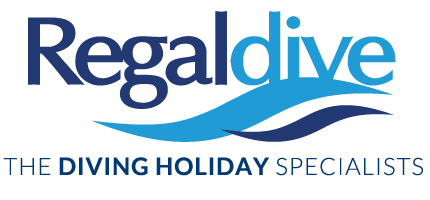
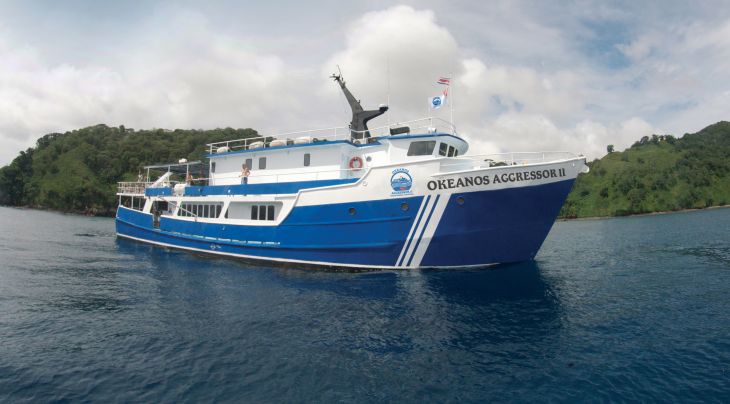
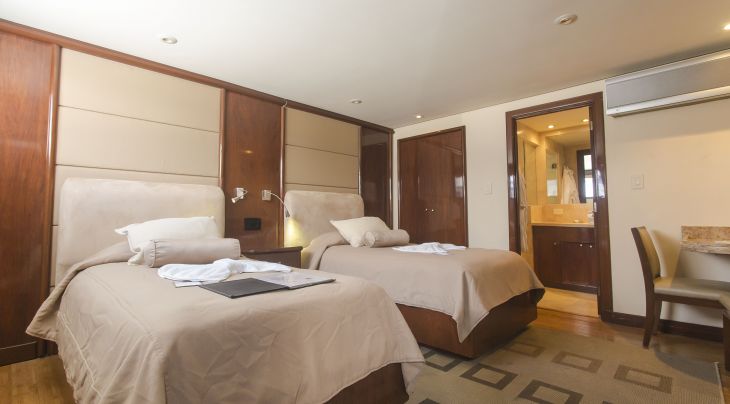

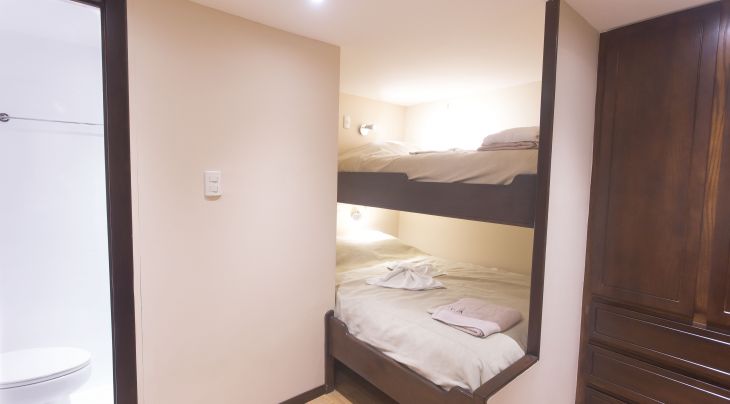
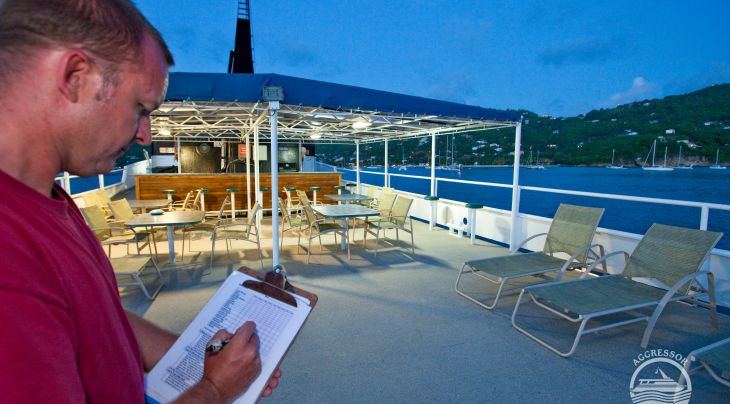
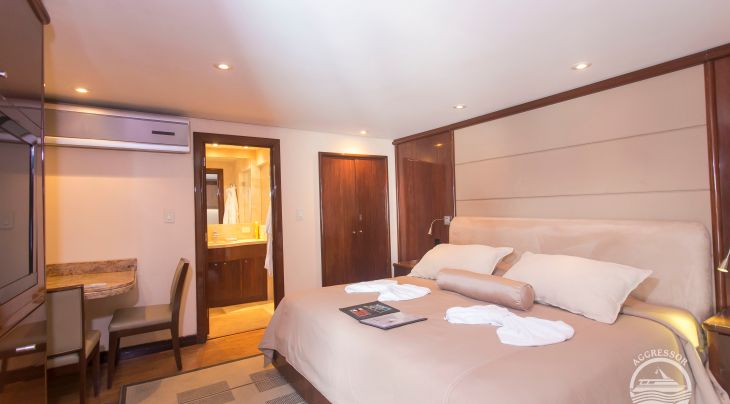
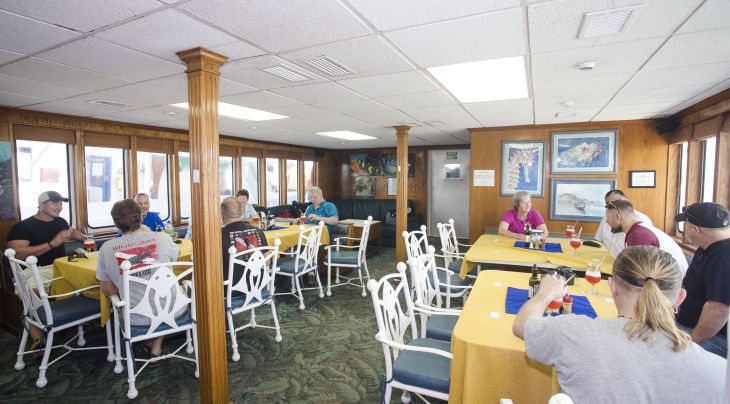
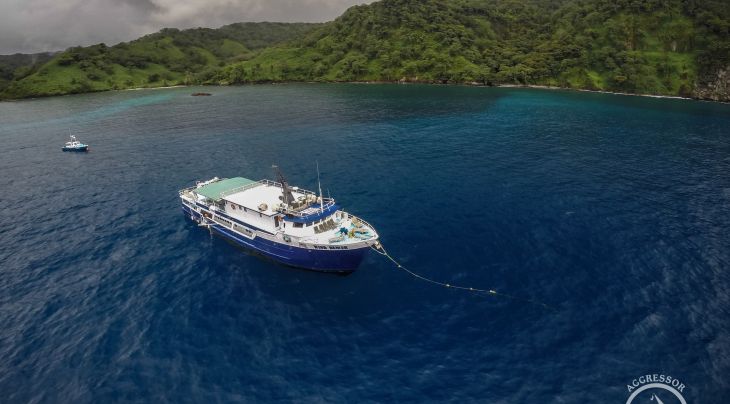











Add new review